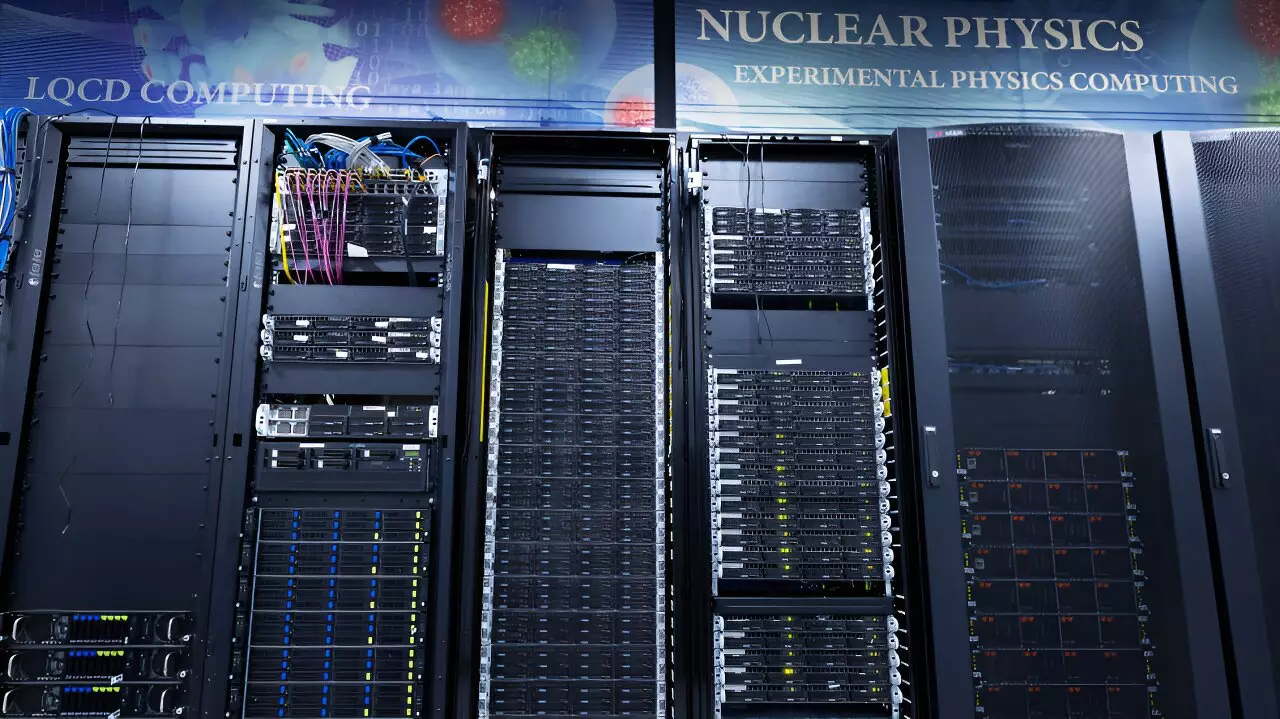In the realm of particle physics, one of the most complex and fascinating subjects is the internal structure of hadrons—particles like protons and neutrons that are fundamental components of atomic nuclei. Contrary to our everyday perception of solid matter, the microcosmic world of hadrons is a dynamic tapestry woven from an intricate web of quarks and gluons. This article delves into the latest developments in understanding these fundamental constituents through the pioneering work of the HadStruc Collaboration, a collective of physicists employing advanced computational techniques to illuminate the mysteries of quantum chromodynamics (QCD).
The Dynamics Within Hadrons
At the center of this inquiry lie partons—quarks and gluons that constantly interact within the hadronic structure. The HadStruc Collaboration, hailing from the Thomas Jefferson National Accelerator Facility, is engaging in groundbreaking research to elucidate the behavior and arrangement of these partons. Their findings, bolstered by rigorous mathematical frameworks, are pushing the boundaries of our understanding of how hadrons form and behave.
As researchers grapple with questions that probe the depths of particle behavior, they employ lattice QCD, a powerful mathematical tool that allows them to simulate the dynamics of particles in a discretized space-time lattice. This virtual experimentation enables them to conceptualize a three-dimensional view of hadronic structure through generalized parton distributions (GPDs), which offer a more nuanced perspective compared to earlier one-dimensional parton distribution functions (PDFs).
The transition from one-dimensional PDFs to GPDs marks a significant leap in our understanding. GPDs allow physicists to visualize and analyze the internal structure of protons with a greater depth. “The challenge of understanding how proton spin arises has long been a topic of discussion,” says Joseph Karpie, a member of the HadStruc Collaboration. GPDs provide a more comprehensive framework that addresses this fundamental question by accounting for not just the quark spins but also the contributions from gluons and the orbital angular momentum of partons.
The fundamental makeup of protons—structured primarily from two up quarks and one down quark, held together by a sea of gluons and quark-antiquark pairs—complicates the understanding of how momentum and energy are distributed within them. The historical realization that quarks contribute less than half of the proton’s overall spin necessitates a broader investigation into the interactions facilitated by gluons. The importance of such insights cannot be overstated, as they unravel the fundamental nature of matter itself.
The HadStruc Collaboration’s work is underpinned by extensive computational simulations, utilizing advanced supercomputing facilities to run thousands of calculations to test their derived models. Notably, the collaboration conducted 65,000 simulations involving diverse proton momenta, showcasing the need for immense computational power in modern physics. Through these simulations, the researchers tested their theories against the established knowledge of particle interactions and ultimately achieved a proof of principle regarding their 3D approach to hadronic structure.
Karpie notes, “This was our proof of principle. We wanted to know if the results from these simulations were consistent with existing data.” The next phase involves refining these approaches, despite the anticipated increase in computational demands, as they strive to ensure the longevity and accuracy of their models.
Future Directions: Experiments and New Horizons
As the HadStruc Collaboration’s findings resonate within the scientific community, experimental validation is poised to take center stage. High-energy facilities worldwide, including Jefferson Lab and the upcoming Electron-Ion Collider (EIC) at Brookhaven National Laboratory, are set to explore the implications of GPDs in real-world scenarios. The upcoming experiments promise to be pivotal as they will not only provide empirical backing but also enhance the theoretical framework developed by the collaboration.
The dynamic nature of particle physics means that ongoing experiments and simulations will continue to inform each other. Karpie emphasizes the ambition of the collaboration to stay ahead of experimental validations, signifying a shift toward a more predictive approach in QCD research. Historically, theory has often played catch-up, post-dicting rather than predicting phenomena, but the HadStruc Collaboration is determined to change that narrative.
The HadStruc Collaboration’s work represents a significant leap forward in our understanding of hadronic structure by intricately mapping the interactions of partons. As they bridge the gap between theoretical models and experimental findings, the quest to unveil the complexities of matter continues. Their research not only deepens our knowledge of fundamental physics but also opens pathways to future inquiries that could redefine our understanding of the universe’s building blocks. Through perseverance and innovation, the collaboration aims to answer fundamental questions about the universe, laying the groundwork for future explorations in particle physics.


Leave a Reply